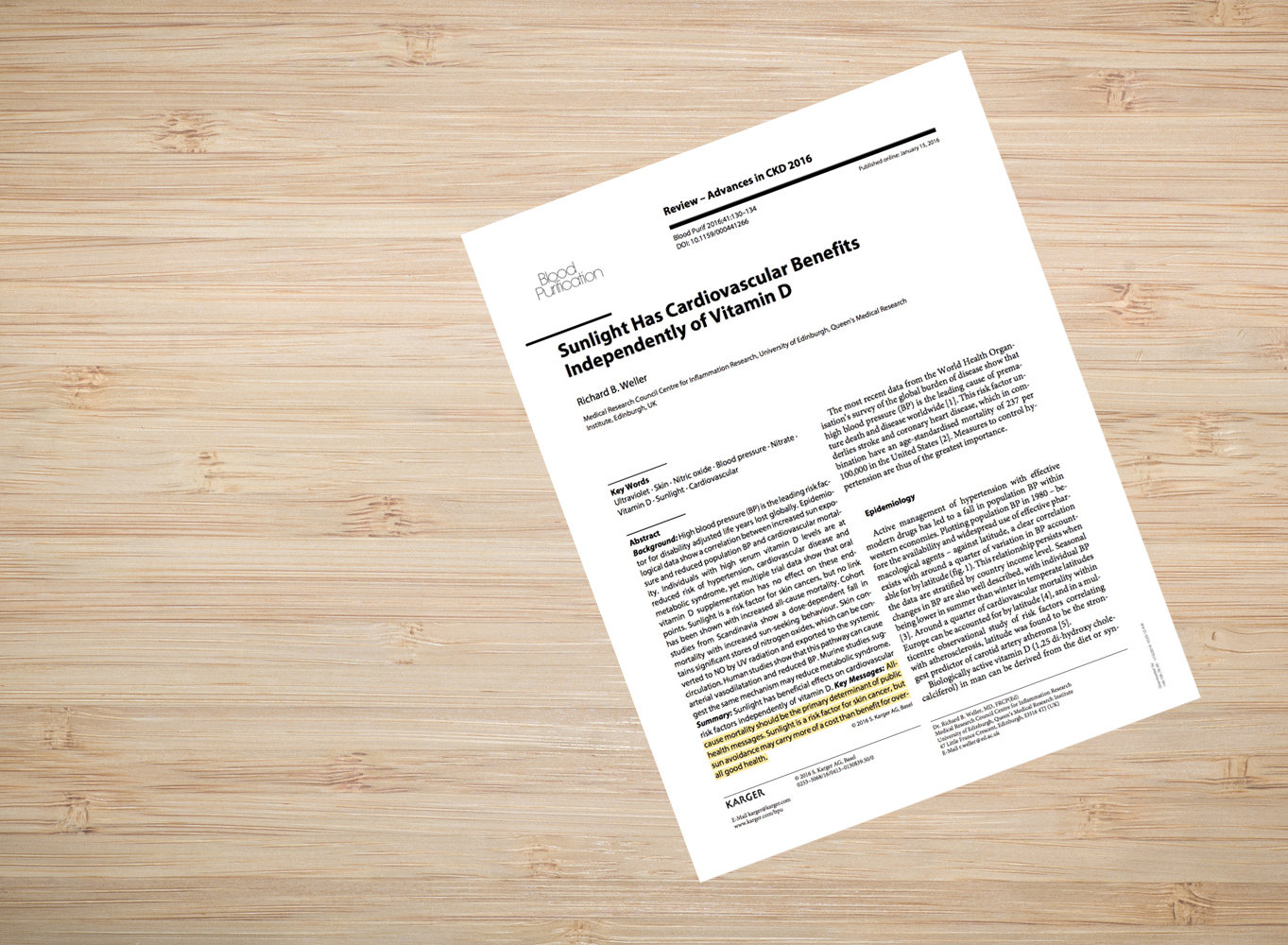Paper Reiterates UV’s Link to ‘Overall Good Health’

The cardiovascular impact of sunlight — reducing blood pressure by triggering the release of nitric oxide from the skin — outweighs any potential risk factors of exposure, researcher Dr. Richard Weller wrote in a 2016 paper published in the journal Blood Purification. Weller pioneered research on the subject in 2013.
Here are some of the key statements from the new paper:
“All-cause mortality should be the primary determinant of public health messages. Sunlight is a risk factor for skin cancer, but sun avoidance may carry more of a cost than benefit for overall good health.”
“For the general white-skinned population, sunlight is the major preventable risk factor for skin cancers, but the pattern of sun exposure varies with cancer type. Intermit- tent sun exposure and sunburn, particularly in childhood, increase the risk of melanoma, whereas chronic occupational exposure may be protective”
“Dose dependently, the higher the sun-seeking behaviour, the lower the all-cause mortality, with those scoring 4 having half the mortality of sun- avoiders. Extrapolating from these data, the authors calculate that 3% of deaths in Sweden can be accounted for by inadequate sun.”
“Importantly, vitamin D is not solely responsible for these proposed health benefits of sunshine. Supplementation with oral vitamin D is not adequate to reduce cardiovascular disease. Alternative mechanisms must exist to account for these benefits of sunlight.”
“Ultraviolet therapy might well have a therapeutic role beyond the treatment of skin disease.”
“Public health advice on sunlight exposure is at the crossroads. Almost a century of data has confirmed the carcinogenic effects of UV radiation on the skin, and delineated the mechanisms by which this occurs. There is however a remarkable absence of any evidence that UV reduces lifespan, in sharp contrast to other risk factors (e.g. hypertension, smoking, alcohol) on which we advise. A substantial body of evidence shows that sunlight has health benefits and that these are independent of vitamin D and thus cannot be reproduced by oral supplementation. The UV-induced reduction of cutaneous nitrate and its export to the systemic vasculature, which I have helped delineate, is an additional mechanism by which sunlight may exert beneficial effects on health, but other mechanisms surely exist. All-cause mortality and its reduction should be the primary aim of physicians, not the narrow avoidance of skin cancer.”
Click here to download the paper in its entirety.
SmartTan.com news articles regularly report medical and scientific information to keep you abreast of current events related to UV light. This information is not intended to be used by any party to make unwarranted health claims to promote sunbed usage. Indoor tanning businesses are obligated to communicate a fair and balanced message to all clients about your products and services including the potential risks associated with indoor tanning. Contact your Smart Tan representative to find out more about what you can and can’t say in your tanning salon business.
© 2019 International Smart Tan Network. All rights reserved.
